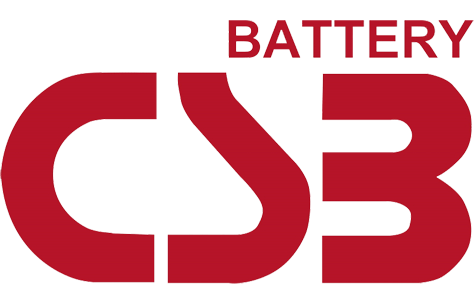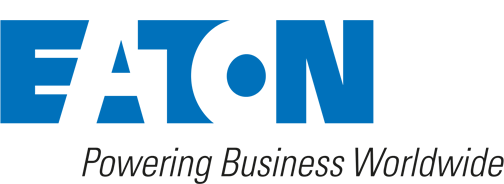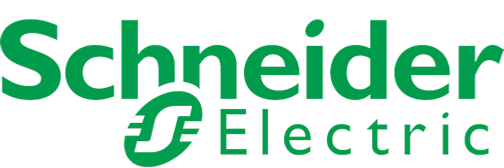How IoT is Revolutionising Uninterruptible Power Supplies
The Internet of Things (IoT) has become a buzzword in technology, revolutionising how devices communicate and interact. IoT is a network of interconnected devices embedded with sensors, software, and other technologies to exchange data and perform tasks without human intervention. One significant aspect of IoT is its potential to enhance the performance of uninterruptible power supplies (UPS), which are critical for providing backup power during power outages. In this blog, we will explore the relationship between IoT and UPS. We will discuss how IoT is transforming the UPS landscape and the implications of this integration.
Uninterruptible power supplies (UPS) provide emergency power to electrical equipment when the power source fails. UPS systems are used in various applications, including data centres, hospitals, manufacturing facilities, telecommunications, and homes. They ensure continuous power supply and prevent data loss, equipment damage, and operational disruptions. Traditional UPS systems typically operate as standalone units, relying on internal battery backup systems and pre-programmed settings. IoT has led to intelligent, efficient, and reliable uninterruptible power supply (UPS) systems.
IoT is transforming UPS by providing improved monitoring and remote management capabilities. IoT-enabled UPS systems include sensors that collect real-time data on battery status, load levels, temperature, and humidity. They send this data to a cloud-based platform for thorough analysis, enabling required actions. This allows for pre-emptive monitoring and maintenance of UPS systems, resulting in early detection of potential issues and minimising downtime. For instance, if a UPS system detects the battery is running low, it can automatically notify designated personnel, allowing them to act.
In addition, IoT-enabled UPS systems can be remotely managed and controlled, providing increased flexibility and convenience. Monitoring and managing UPS systems is effortless with web-based and mobile interfaces. This allows remote setting and configuration, such as adjusting battery runtime, changing shutdown parameters, or conducting diagnostics. This is without physical access to the UPS system. This saves time and effort and enables more efficient management of multiple UPS systems across different locations, making it ideal for large-scale deployments.
Another significant benefit of integrating IoT with UPS systems is predictive maintenance. With data analytics and machine learning algorithms, IoT-enabled UPS systems can analyse historical and real-time data to identify patterns and trends that may reveal potential equipment failures. For instance, if the system detects a gradual decline in battery performance over time, it can predict the remaining battery lifespan. It can also schedule a battery replacement before it fails during an outage. This helps to prevent unexpected failures and extends the overall lifespan of the UPS system, resulting in improved reliability and reduced maintenance costs.

As well as monitoring and maintenance, IoT can also enhance UPS energy efficiency. UPS systems consume energy even when the primary power supply is available, continuously recharging and maintaining battery backup. IoT-enabled UPS systems can optimise energy consumption by intelligently managing battery charging and discharge cycles based on real-time data. For example, during periods of low load, the UPS system can automatically adjust the charging rate to minimise energy consumption. It does this while ensuring battery charging for future outages. This reduces energy waste and lowers operational costs, making it environmentally friendly and economically viable.
IoT can also enable advanced analytics and reporting capabilities for UPS systems. Data collected from IoT sensors make a thorough analysis and reporting on the UPS system's performance and well-being possible. This can include information on power quality, load trends, battery status, and system efficiency. You can access these reports through the cloud-based platform, providing valuable information for capacity planning, performance optimisation, and decision-making. For example, data on power quality can help identify potential issues with the primary power supply, allowing positive measures to avoid disruptions. Load trends can help optimise UPS system sizing based on actual demand, resulting in better resource allocation and cost savings. Battery status information can help predict battery replacement cycles, ensuring battery replacement at the correct time to prevent failures during critical operations. Overall, IoT-enabled UPS systems offer valuable insights that enhance UPS operations efficiency and effectiveness.
Integrating IoT with UPS systems unleashes a world of advanced business models and services waiting to be explored. With the ability to monitor and manage UPS systems, service providers can offer valuable services, such as remote diagnostics, predictive maintenance, and energy management. For example, a UPS service provider can remotely monitor UPS systems in a data centre. It can also provide pre-emptive maintenance services, such as battery replacements or firmware updates, ensuring maximum uptime. This can lead to improved customer satisfaction, increased customer retention, and additional revenue streams for service providers.
IoT-enabled UPS systems are deployable in broader buildings or connected city initiatives. For instance, UPS systems can communicate with other building systems, such as HVAC (Heating, Ventilation, and Air Conditioning) or lighting systems, to optimise energy usage and demand response. During peak load periods, the UPS system can provide additional power to offset demand and reduce grid load. This results in improved energy efficiency, reduced energy costs, and a more sustainable building or city ecosystem.
IoT and UPS systems, however, can have some challenges and considerations. One of the most pressing concerns is cybersecurity. With the increased connectivity and data exchange in IoT-enabled UPS systems, the risk of cyber threats, such as data breaches, hacking, and unauthorised access, becomes higher. UPS systems, being critical infrastructure, must have robust security measures in place to protect against potential attacks. This includes implementing authentication mechanisms, encryption protocols, regular security audits, and updates to mitigate vulnerabilities. Also, proper access control and user management protocols allow approved personnel to access and manage the UPS system.
Another challenge is the interoperability and standardisation of IoT-enabled UPS systems. The IoT landscape is vast and diverse, with various protocols, platforms, and vendors. Ensuring seamless integration and interoperability of IoT-enabled UPS systems can be complex and challenging. Standardisation efforts, such as protocols, interfaces, and data models, are essential to ensure interoperability and seamless communication among different devices and systems. This will allow simple integration, scalability, and flexibility in deploying IoT-equipped UPS systems in diverse environments.
Data privacy and ownership need to be addressed. IoT-enabled UPS systems collect and transmit sensitive data, such as battery status, load levels, and operational parameters, to a cloud-based platform for analysis. It is crucial to have data privacy policies to ensure that data collection, storage, and usage comply with relevant data protection regulations. Also, issues with data ownership need to be addressed, as data generated by UPS systems may have value for various stakeholders, including UPS manufacturers, service providers, and end-users. Establishing clear guidelines and agreements regarding data ownership and usage is crucial to prevent misunderstandings or abuse.
In conclusion, IoT integration with UPS systems has the potential to revolutionise uninterruptible power supplies. This will enable advanced monitoring, management, efficiency, and services. IoT-enabled UPS systems offer real-time monitoring, analytics, and remote management capabilities that enhance operational efficiency, reduce downtime, and optimise resource allocation. However, challenges such as cybersecurity, interoperability, standardisation, and data privacy and ownership need to be managed carefully. This is to ensure secure and effective IoT and UPS integration. To truly unlock the potential of the Internet of Things, we must prioritise regulatory frameworks, industry collaborations, and ethical considerations. Only then can we effectively tackle potential risks and challenges. With the rapid evolution of technology, IoT-enabled UPS systems stand as a pivotal player in driving the digital transformation of countless industries, propelling us towards a more sustainable and efficient future.
To learn more about Secure Power's IoT-enabled UPS systems and support services, contact us at 0800 080 3118!














